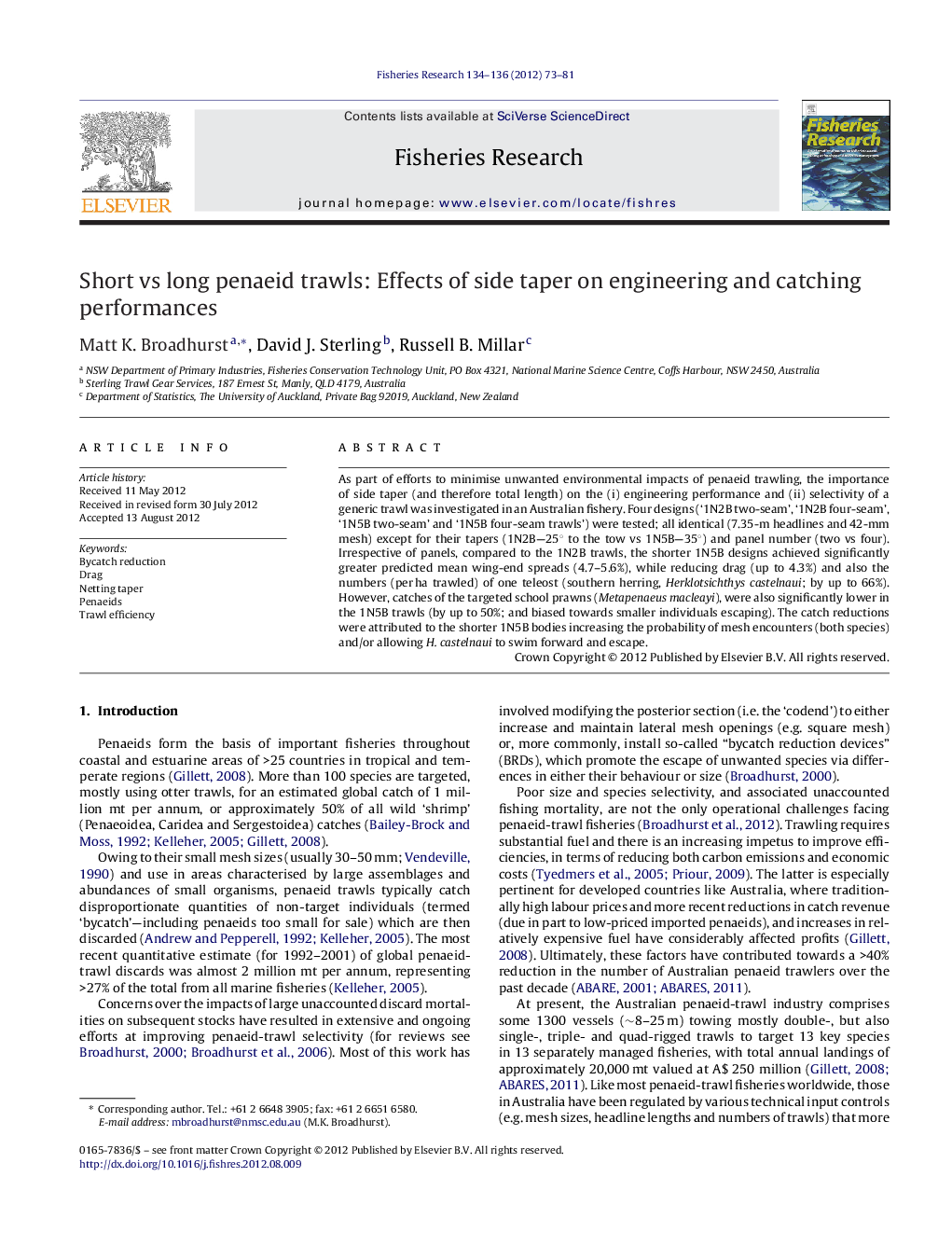| Article ID | Journal | Published Year | Pages | File Type |
|---|---|---|---|---|
| 4543243 | Fisheries Research | 2012 | 9 Pages |
Abstract
As part of efforts to minimise unwanted environmental impacts of penaeid trawling, the importance of side taper (and therefore total length) on the (i) engineering performance and (ii) selectivity of a generic trawl was investigated in an Australian fishery. Four designs ('1N2B two-seam', '1N2B four-seam', '1N5B two-seam' and '1N5B four-seam trawls') were tested; all identical (7.35-m headlines and 42-mm mesh) except for their tapers (1N2B-25° to the tow vs 1N5B-35°) and panel number (two vs four). Irrespective of panels, compared to the 1N2B trawls, the shorter 1N5B designs achieved significantly greater predicted mean wing-end spreads (4.7-5.6%), while reducing drag (up to 4.3%) and also the numbers (per ha trawled) of one teleost (southern herring, Herklotsichthys castelnaui; by up to 66%). However, catches of the targeted school prawns (Metapenaeus macleayi), were also significantly lower in the 1N5B trawls (by up to 50%; and biased towards smaller individuals escaping). The catch reductions were attributed to the shorter 1N5B bodies increasing the probability of mesh encounters (both species) and/or allowing H. castelnaui to swim forward and escape.
Related Topics
Life Sciences
Agricultural and Biological Sciences
Aquatic Science
Authors
Matt K. Broadhurst, David J. Sterling, Russell B. Millar,
